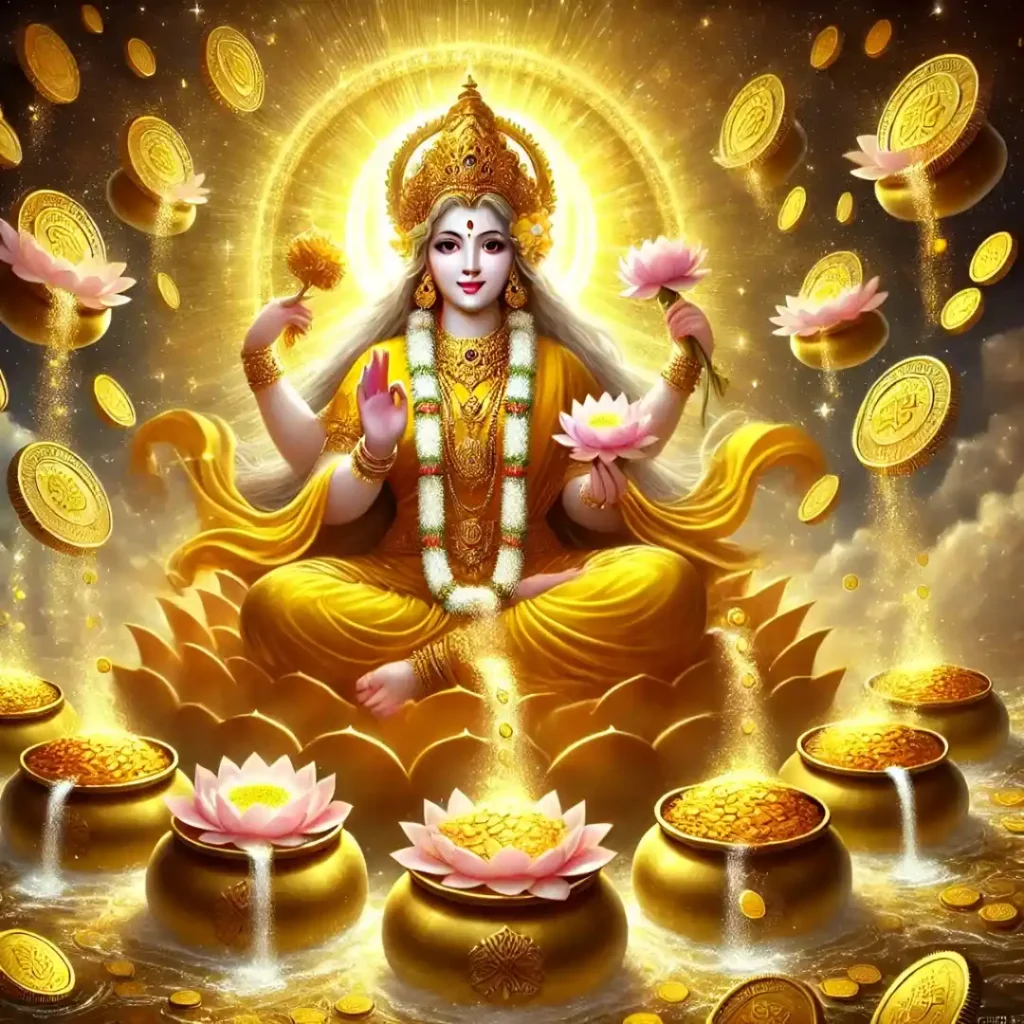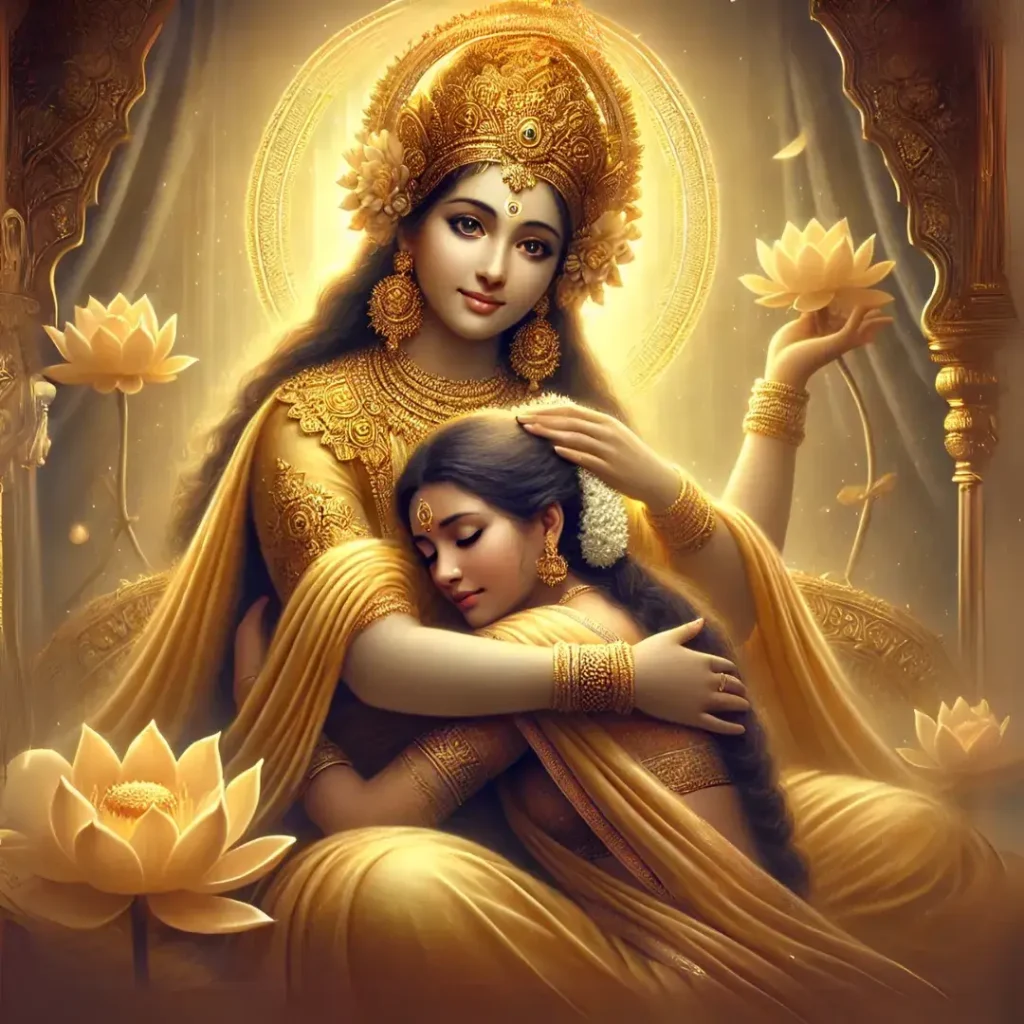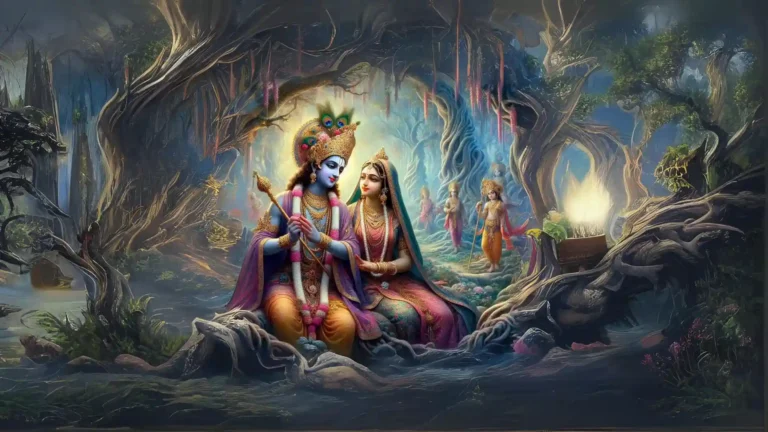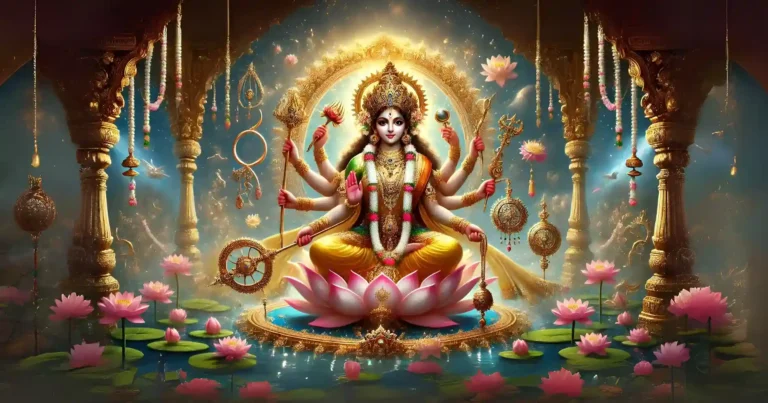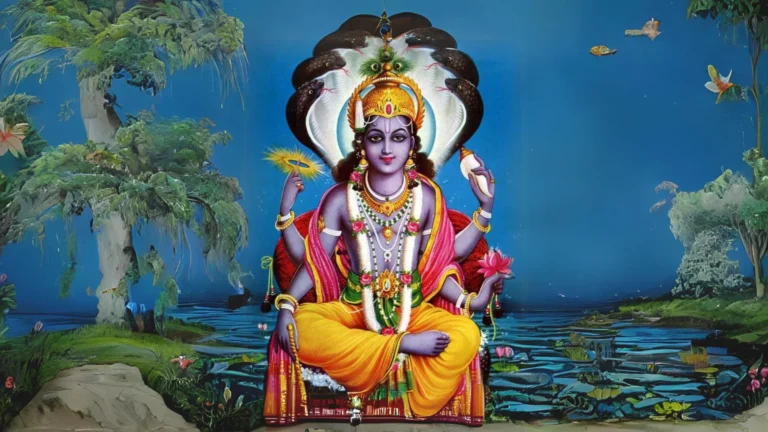Please Like the Blog and Share it for Maximum Reach
Table of Contents
7 Key Blessings from the Dhanalakshmi Stotram
- Removal of poverty
- Financial stability
- Career upliftment
- Karmic cleansing
- Devotion enhancement
- Family welfare
- Protection from negativity
Introduction to Dhanalakshmi Stotram
Among the many Stotrams dedicated to Divine Feminine energy in Sanatana Dharma, the Dhanalakshmi Stotram holds a special place for its power to attract abundance, wealth, and spiritual grace.
Grace is a matter of inner realization that can only be triggered only when Sri Gurudeva gives a particular Stotram or mantra with a specific purpose to be recited by his surrendered disciple.
The Dhanalakshmi Stotram is one such powerful hymn where Vaishnava spiritual stalwarts give them to their dear disciples to solve material problems, increase material prosperity so that ultimately the Stotram removes all material hindrances to manifest spiritual purity in the hearts of the disciples.
This stotram is a beautiful blend of poetic devotion and spiritual wisdom. Its magnificent verses and divine expressions reveal the deeper significance of Sri Lakshmi Devi in her special manifestation as Dhanalakshmi—the Giver of Wealth.
The Concept of Devi Dhanalakshmi
Dhanalakshmi is one of the eight forms of Mahalakshmi, collectively known as Ashta Lakshmi. Each of these forms governs a unique type of wealth. Dhanalakshmi, in particular, is associated with material wealth, prosperity, and financial stability. However, in Vedic spirituality, wealth is not restricted to material prosperity alone. It includes abundance in health, knowledge, devotion, and virtue. Thus, Devi Dhanalakshmi is a holistic provider of prosperity in all spheres of life.
Origins and Structure of the Dhanalaxmi Stotram
The Dhanalakshmi Stotram also sometimes known as the Dhanada Stotram is a Sanskrit hymn that appears in certain South Indian Vaishnava traditions and is mainly recited for overcoming poverty and attracting divine wealth. The original composer of this Stotram is unknown but it occurs in the Vedic Scriptures referred to by the Vaishnava Traditions such as Sri Vaishnavism and Sri Madhwa Traditions of Southern Bharat.
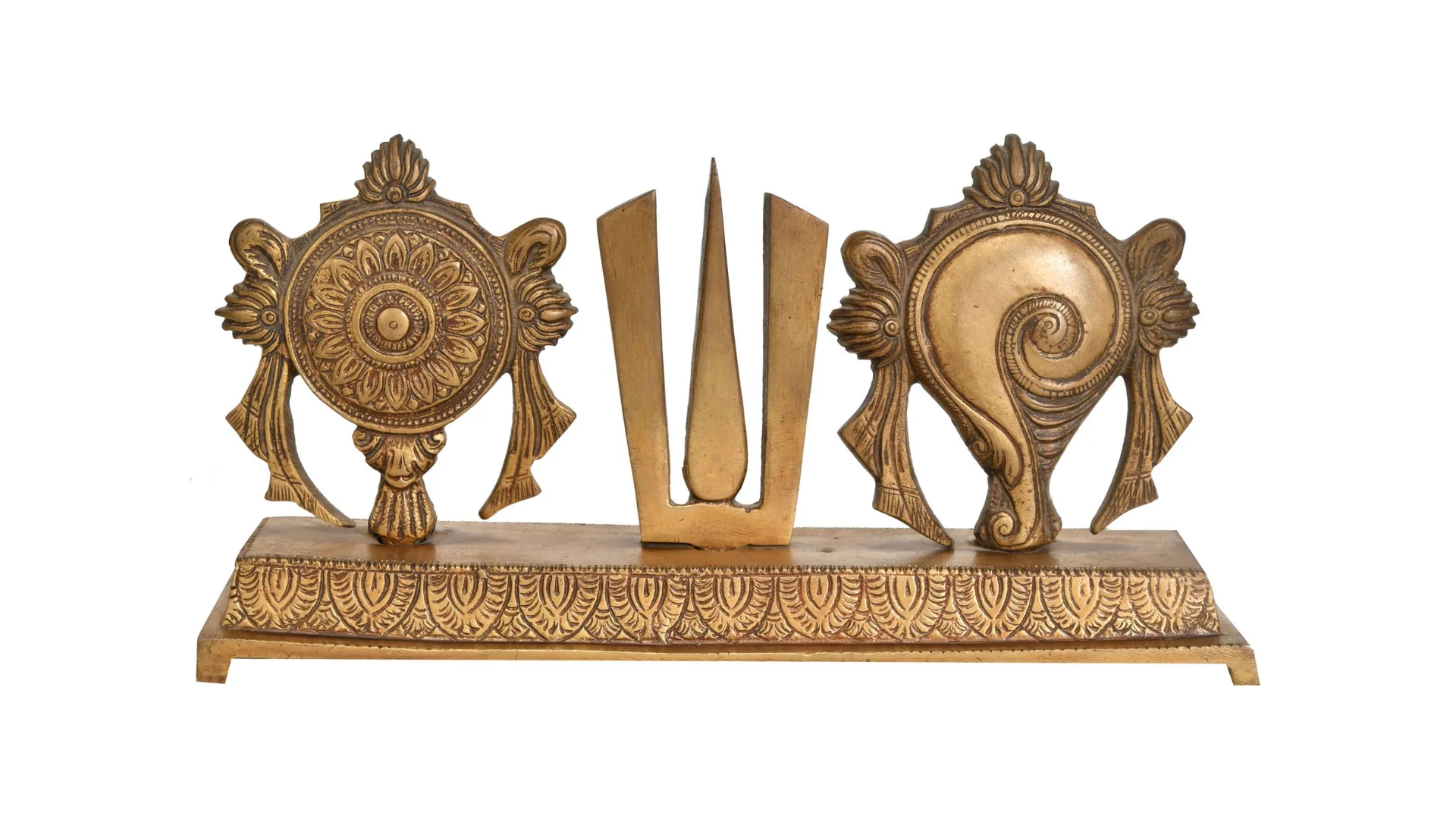
The stotram is in a dialogue format. It begins with a divine exchange between Goddess Parvati and Lord Shiva. Parvati Devi, moved by compassion for householders and the impoverished, requests a solution for their financial miseries.
In response, Lord Shiva recites the Dhanalakshmi Stotram, glorifying the Goddess and explains how this stotram can alleviate suffering and bestow its infinite blessings.
The Role of Devi Parvati and Bhagawan Shiva
A fascinating element of this stotram is the compassionate role of Parvati, who approaches Lord Shiva on behalf of the suffering. Her concern for householders (grihasthas) and seekers indicates the compassionate maternal nature of the Divine Feminine.
Lord Shiva’s response is also filled with deep reverence for Dhanalakshmi Devi, the consort of Mahavishnu Swami. This gives the stotram an elevated position, as it is sanctioned and recited by Sri Mahadeva Himself.
Purpose and Significance
The core aim of the Dhanalakshmi Stotram is to remove “daridrata” or poverty, both material and spiritual. Chanting this stotra under the instructions of an authorized Guru from the Guru Parampara shall, for certain:
- Remove financial obstacles
- Improve business and career success
- Create a mindset of abundance
- Eliminate negative karmic blocks related to money
- Deepen devotion to the Divine Mother
- Attract grace, not just money or material prosperity.
It is important to remember that in Sanatana Dharma, wealth is always meant to serve Dharma.

Wealth that is wasted on speculative practices, unrighteous practices, fakery and unnecessary sense enjoyment or indulgence is a direct insult of Mahadevi Dhanalakshmi, which in time shall erode all the spiritual merit of an individual and make him devoid of any spiritual wealth and intelligence.
Therefore, invoking Devi Dhanalakshmi is also an invocation of righteous wealth—prosperity that uplifts and purifies one’s life.
The Structure and Verses of the Dhanalaxmi Stotram
The stotra consists of 21 verses, each one imbued with rich metaphorical and devotional content. It opens with a description of Parvati’s question and Shiva’s reply. One must remember that Bhagawan Shiva is the Guru of all Acharyas and thus represents the Universal Guru, the Samasthi Guru. His words can never be challenged. The following verses praise Dhanalakshmi in multiple forms and attributes, requesting Her grace in a variety of aspects.
From the radiance of Her form to Her divine attire, the verses capture the beauty and grandeur of the Goddess. She is described as adorned with flowers, praised by bees, glowing like the moon, and possessing all qualities that nourish both inner and outer prosperity.
The latter verses affirm the power of a sincere reciter and the results it bestows upon such faithful sadhakas—wealth, removal of poverty, and fulfillment of righteous desires. The philosophical undertone reveals that this wealth is not to be hoarded but to be used for dharmic living.

Thus, the verses elevate the stotram from being a mere request for riches to a sacred dialogue on divine grace, devotion, and the responsibilities that accompany abundance.
The stotram also sufficiently emphasizes the nature of Truth, Karma, and Divine reciprocity meaning, one who pursues divinity shall be guarded and protected by Divinity. Lord Shiva himself assures that chanting this stotram with faith ensures not only the acquisition of wealth but its preservation and its dharmic utilization.
Bhagawan Shiva gives repeated assurance of truth by saying “satyam, satyam eva vaco mama” which acts as a divine seal of authenticity, assuring the devotee that the promises made in the hymn are not mere poetic decorations but spiritual truths.
The hymn uses vivid imagery—such as the red lotus feet of the Goddess, her moon-like face, and the blue lotus eyes—to describe the form of Dhanalakshmi. These are not just poetic descriptions but symbols laden with deep spiritual meaning.
The red lotus, for instance, symbolizes auspiciousness and divine grace that is active in the material world. The blue lotus eyes represent transcendental vision—seeing beyond mere material existence into the essence of abundance.
The stotram also projects Devi Dhanalakshmi as a deeply personal deity. She is not a distant cosmic force, but a mother to be lovingly invoked.
The language used is intimate and sincere, with words like “prasīda” (be pleased) and “dayākare” (giver of compassion) reinforcing the emotional connection between the devotee and the deity. This establishes the stotram as both a spiritual tool and an offering of love.
This perspective dissolves the duality between spiritual and material—showing that the divine wants us to live with dignity, abundance, and gratitude, not just renunciation and austerity, as is the misplaced opinion of many who conjecture about spiritual merit, not having themselves lived through spiritual realization. It redefines wealth not as greed or excess, but as a divine force to be respected and used for righteous purposes.
7/8 Questions from Sanatana Dharma
The scores generated in this Quiz may or may not be absolute. There may be right or wrong answers to each Question. A percentage towards 100 indicates that you are more aligned to the overall subject matter.
Chanting Procedure and Best Practices
Chanting the Dhanalakshmi Stotram is most effective when performed with devotion, focus, and proper spiritual intent. Here are some recommended guidelines:
- Time: Fridays, especially during the early morning (Brahma Muhurta) or evening (Sandhya time), are considered auspicious.
- Cleanliness: Take a bath, wear clean clothes, and sit in a quiet space.
- Offerings: Light a ghee lamp, offer flowers (preferably red or yellow), and incense.
- Chanting: Chant the stotram with a clean, sincere heart. It can also be recited on behalf of one’s family.
- Count: For deeper sadhana, the stotram can be chanted 11, 21, or 108 times.
- Consistency: Daily or weekly recitation brings cumulative benefit.
Benefits of Chanting Dhanalakshmi Stotram
The benefits of regular chanting are both spiritual and material:
- Wealth and Prosperity: Attracts financial abundance and secures material stability.
- Spiritual Growth: Enhances bhakti (devotion) and sattva (purity) in the mind.
- Family Welfare: Ensures harmony, health, and unity in the household.
- Removes Vastu Doshas: When recited at home regularly, it is believed to purify the space.
- Protection: Invokes the Goddess’s Grace to remove obstacles and negativity.
- Quick Relief: Provides fast results for those in urgent financial distress, as stated in the stotram itself. The Stotram carries the direct benedictions of Lord Shiva
Interpretation by Scholars
Saints and scholars of the Vaishnava tradition, especially in South India, have spoken highly of this stotram. Some commentaries consider this stotram to be a condensed teaching on karma and consequence, woven subtly through poetic mood.

The opening invocation and concluding verses are seen as keys to understanding the philosophical foundation of abundance as divine reciprocation.
This stotram is not a mechanical chant; it is a philosophical statement that wealth flows to those who align with cosmic truth. It reminds us that poverty is not merely economic but also psychological, karmic and above all Dharmic. Wealth born out of Adharma can never be referred to as prosperity. In this context, Dhanalakshmi is the compassionate force that heals these layers—material, mental, and spiritual.
How Dhanalakshmi Differs from Other Forms
Unlike Dhanya Lakshmi (who grants food), Vijaya Lakshmi (who grants victory), or Santana Lakshmi (who grants progeny), Dhanalakshmi is unique in her direct influence on wealth, finances and above all prosperity that renders contentment .
Yet she is never separate from the other forms. Dhanalakshmi represents the energy that flows when righteousness (dharma) is upheld.
In that sense, her blessings are aligned not with mere greed or desire, but with deservingness and dharmic conduct. She rewards those who seek prosperity to uphold family, culture, service, and devotion.
A Living Tradition in Temples
In South India, particularly in Tamil Nadu and Andhra Pradesh, this stotram is still chanted in households and temples. During Varalakshmi Vrata and other Lakshmi pujas, the Dhanalakshmi Stotram is part of the liturgy.
Temples dedicated to Mahalakshmi or Bhagawan Vishnu often incorporate these verses during aarti or special events focused on wealth blessings. Srirangam, Tirupati, and Kolhapur are places where these recitations are especially common.
Conclusion: The Dhanalakshmi Stotram is a Hymn of Divine Prosperity
The Dhanalakshmi Stotram is more than a mere chant for wealth. It is a sacred song that connects the devotee to the divine rhythms of karma, grace, and abundance.
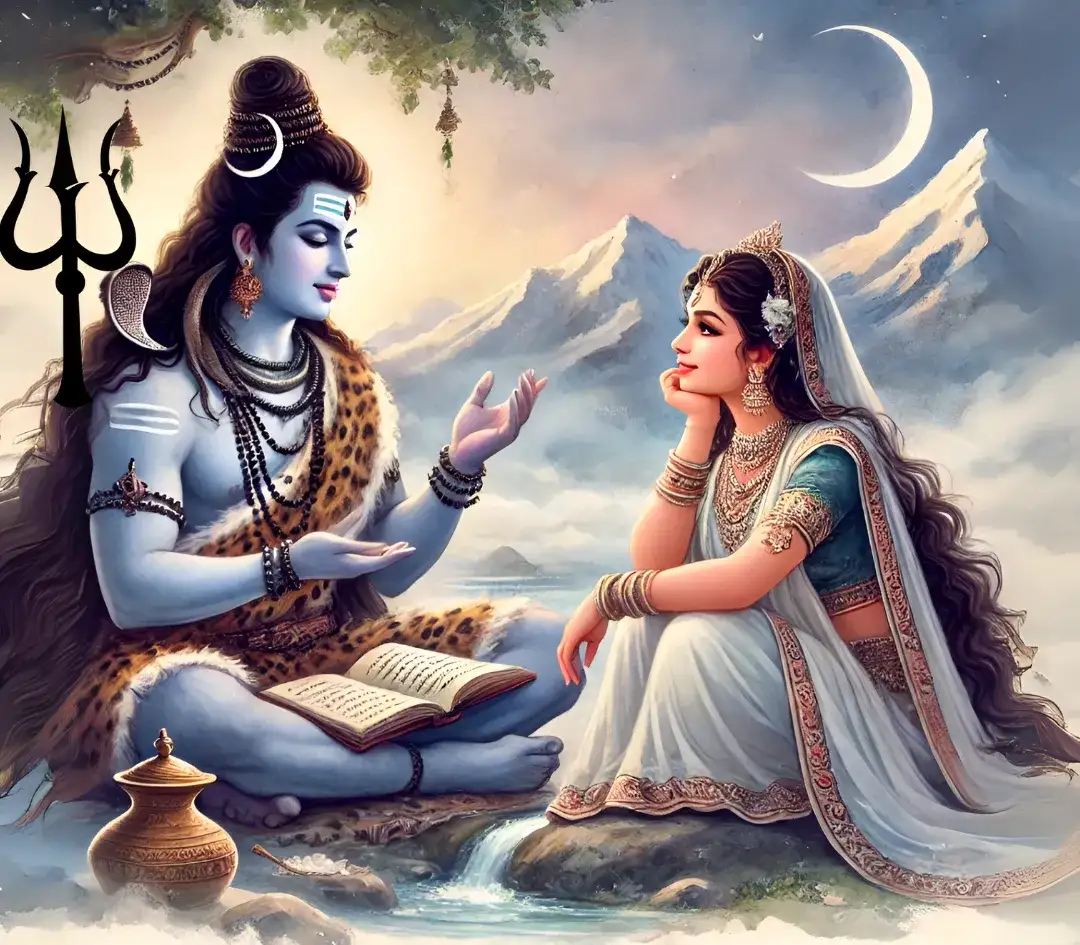
Through the compassionate dialogue between Parvati and Shiva, and the poetic praise of the Goddess, it carries an energy that cleanses the mind, enriches the home, and aligns the soul with the universal flow of prosperity.
In an age where material wealth is often sought without spiritual grounding, this stotram reminds us that true abundance comes from Bhagawan’s Grace—earned through devotion, purity, and alignment with Dharmic Living.
Kindly Chant this Stotram with dedicated faith, and let Devi Dhanalakshmi illuminate your life with her golden light of abundance and bliss.
Please Like the Blog and Share it for Maximum Reach




